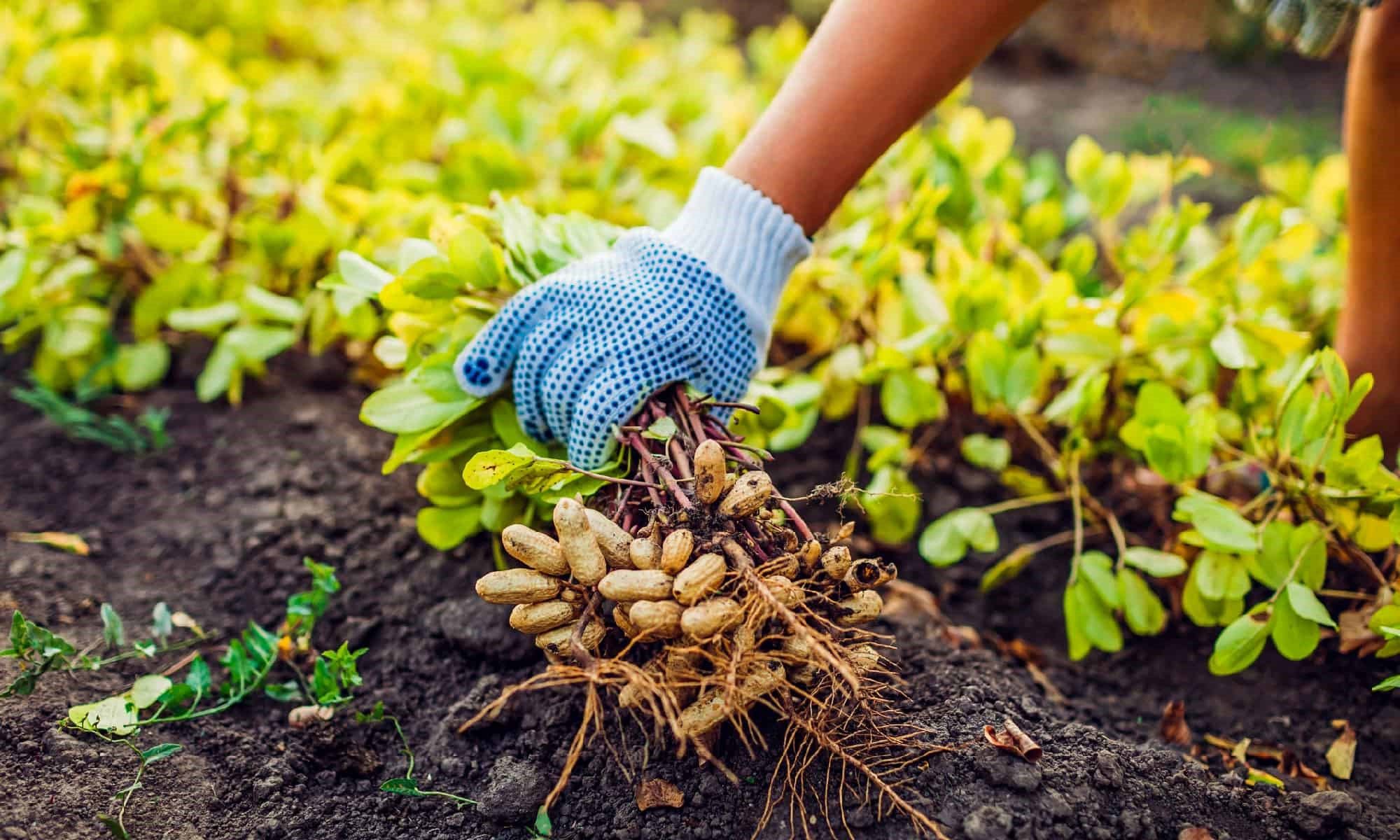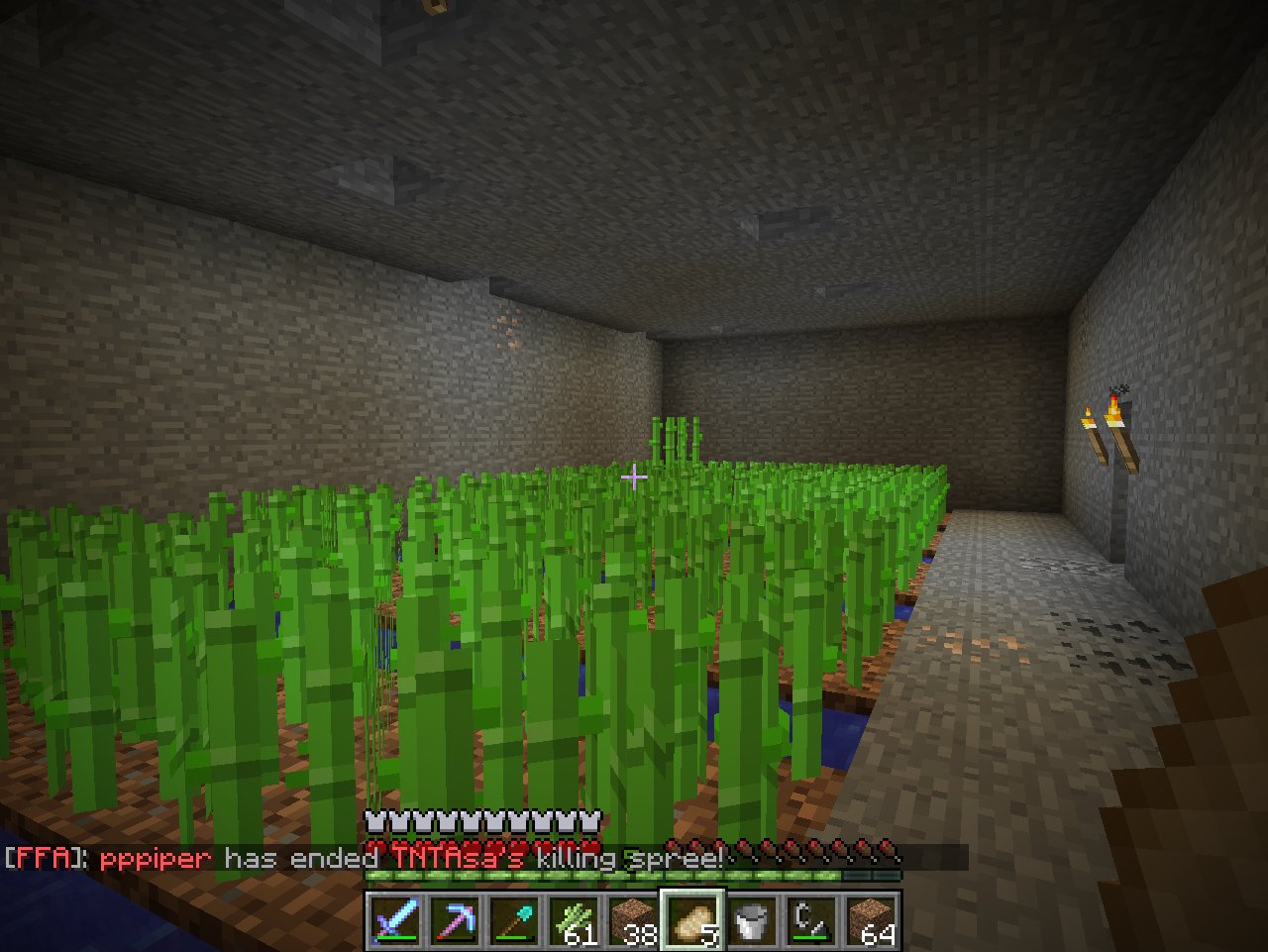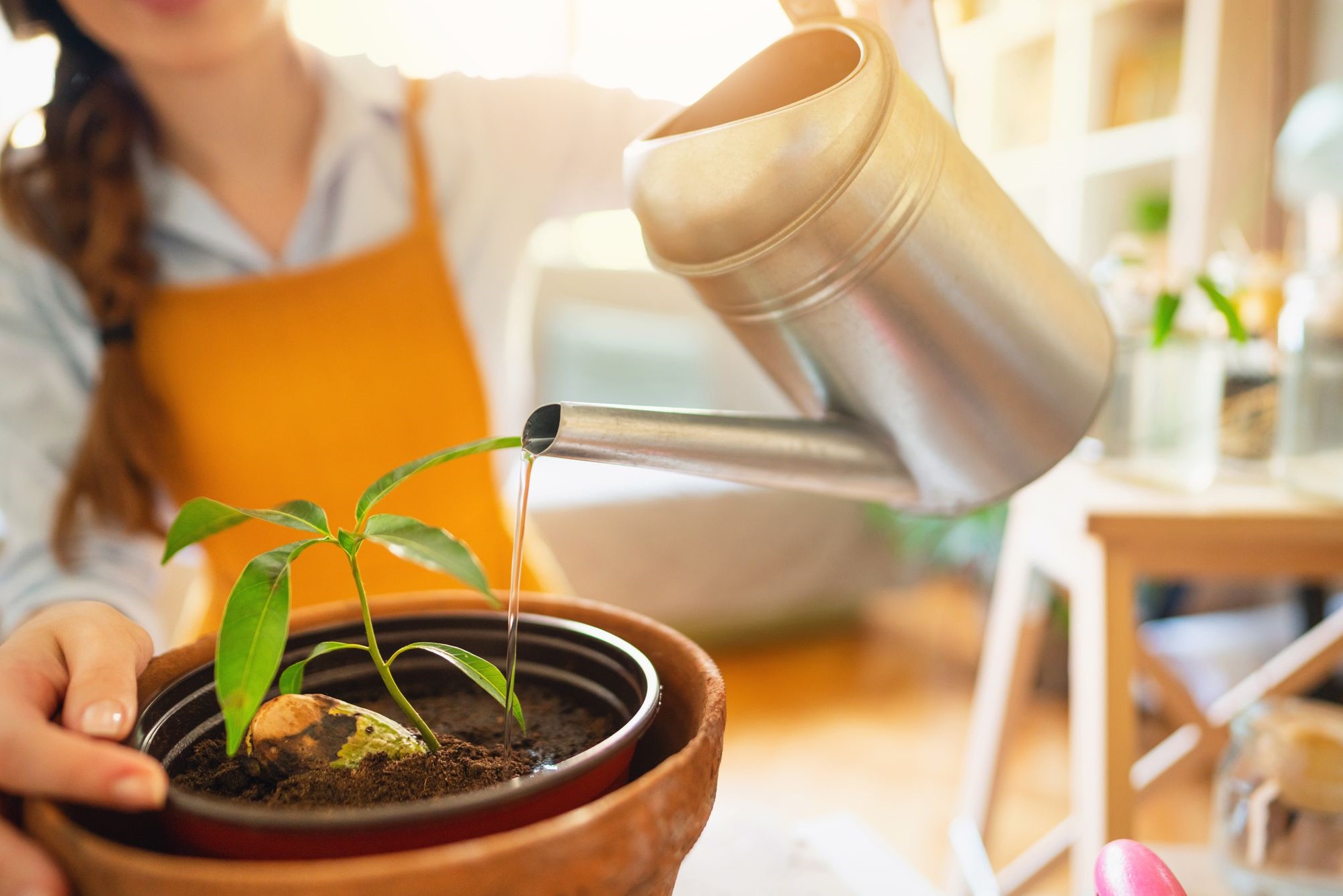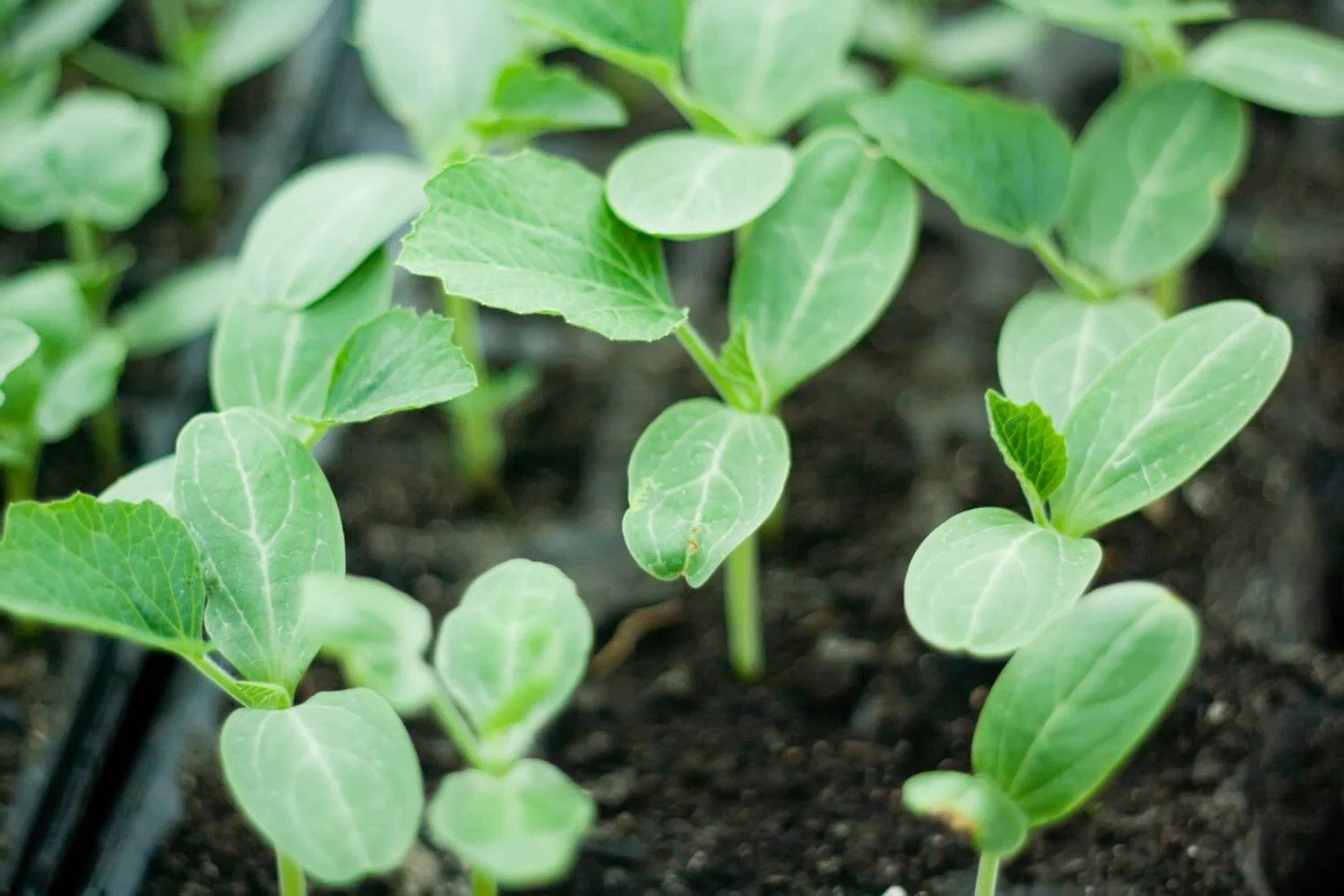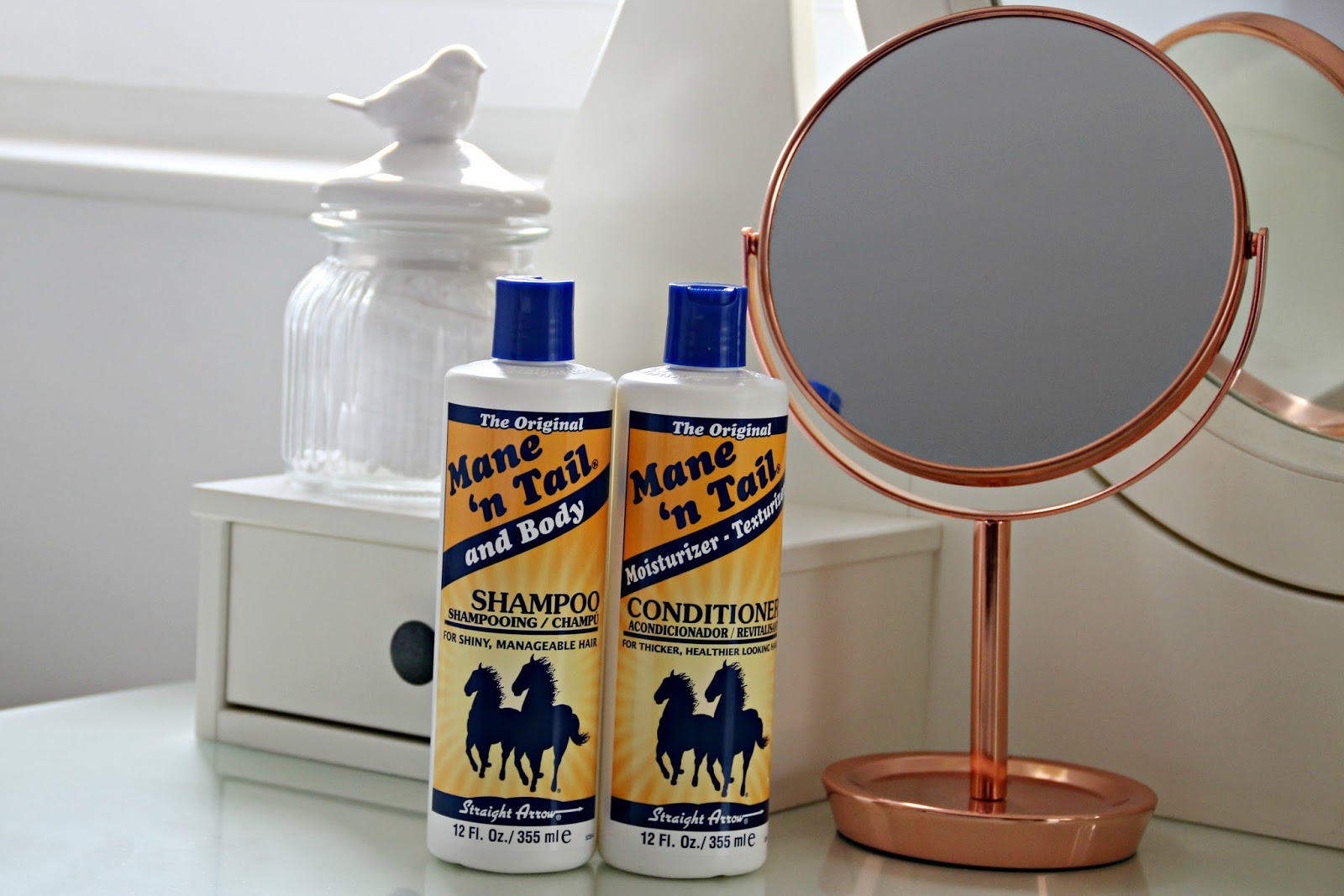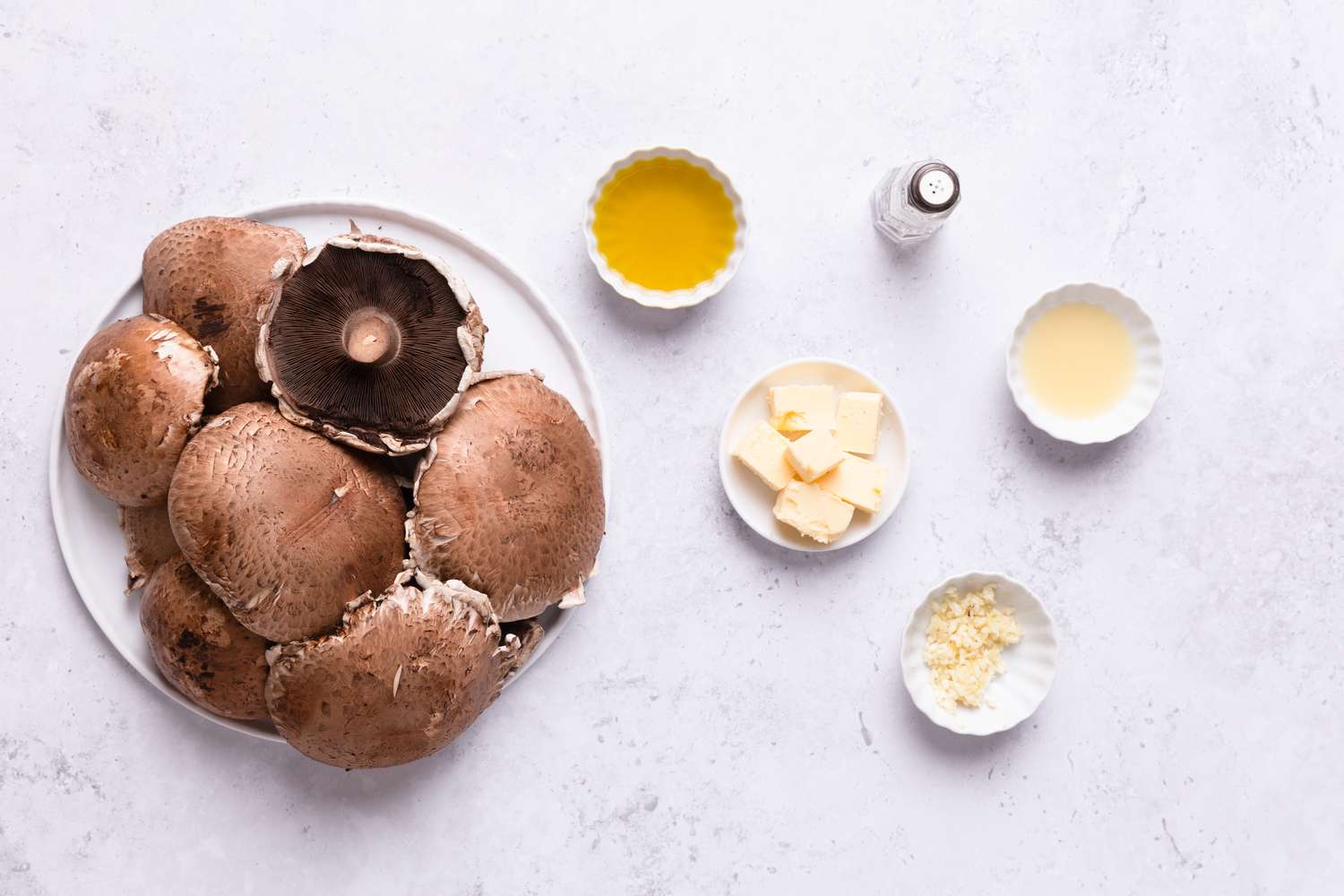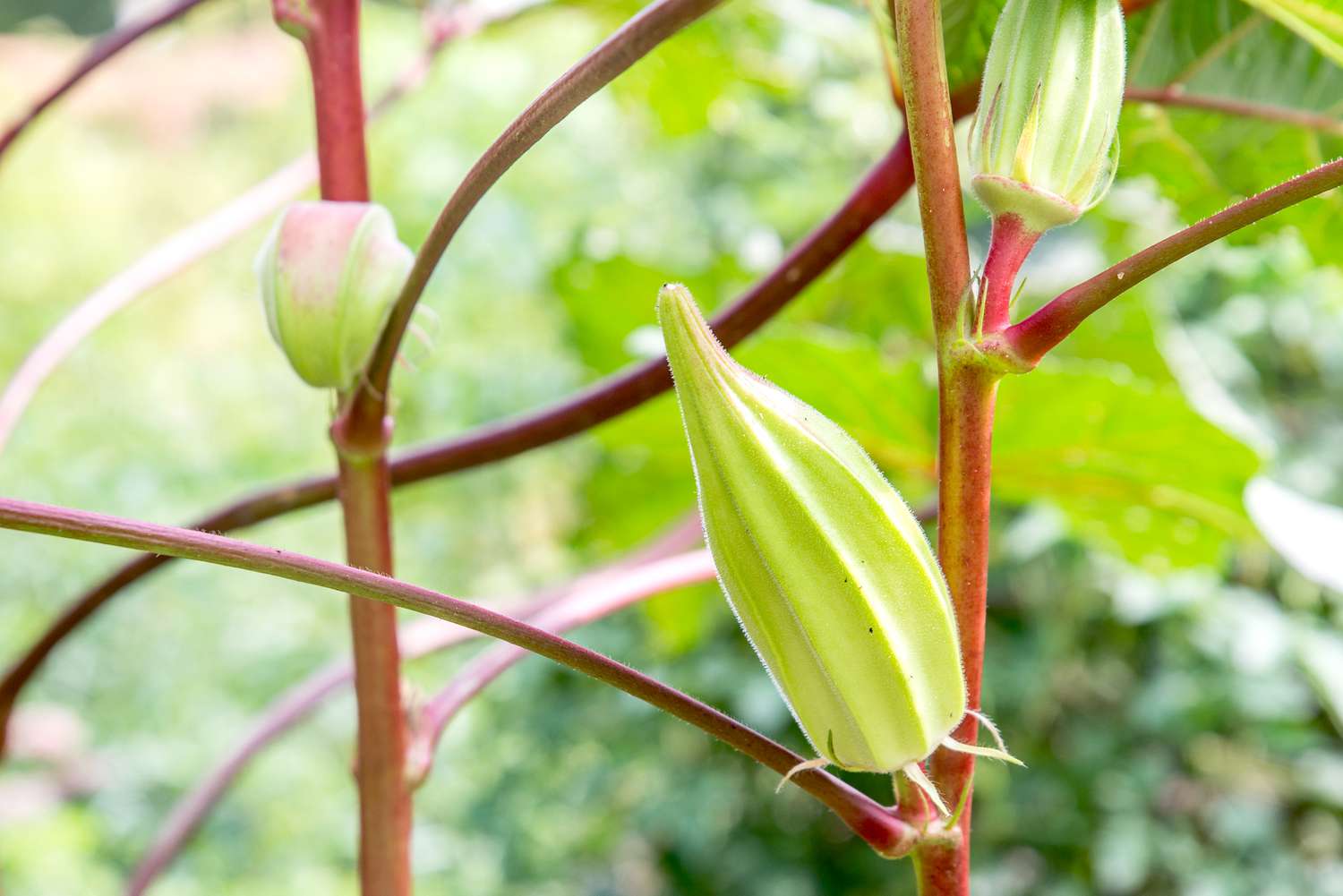Home>Home and Garden>How To Grow Lion’s Mane Mushrooms
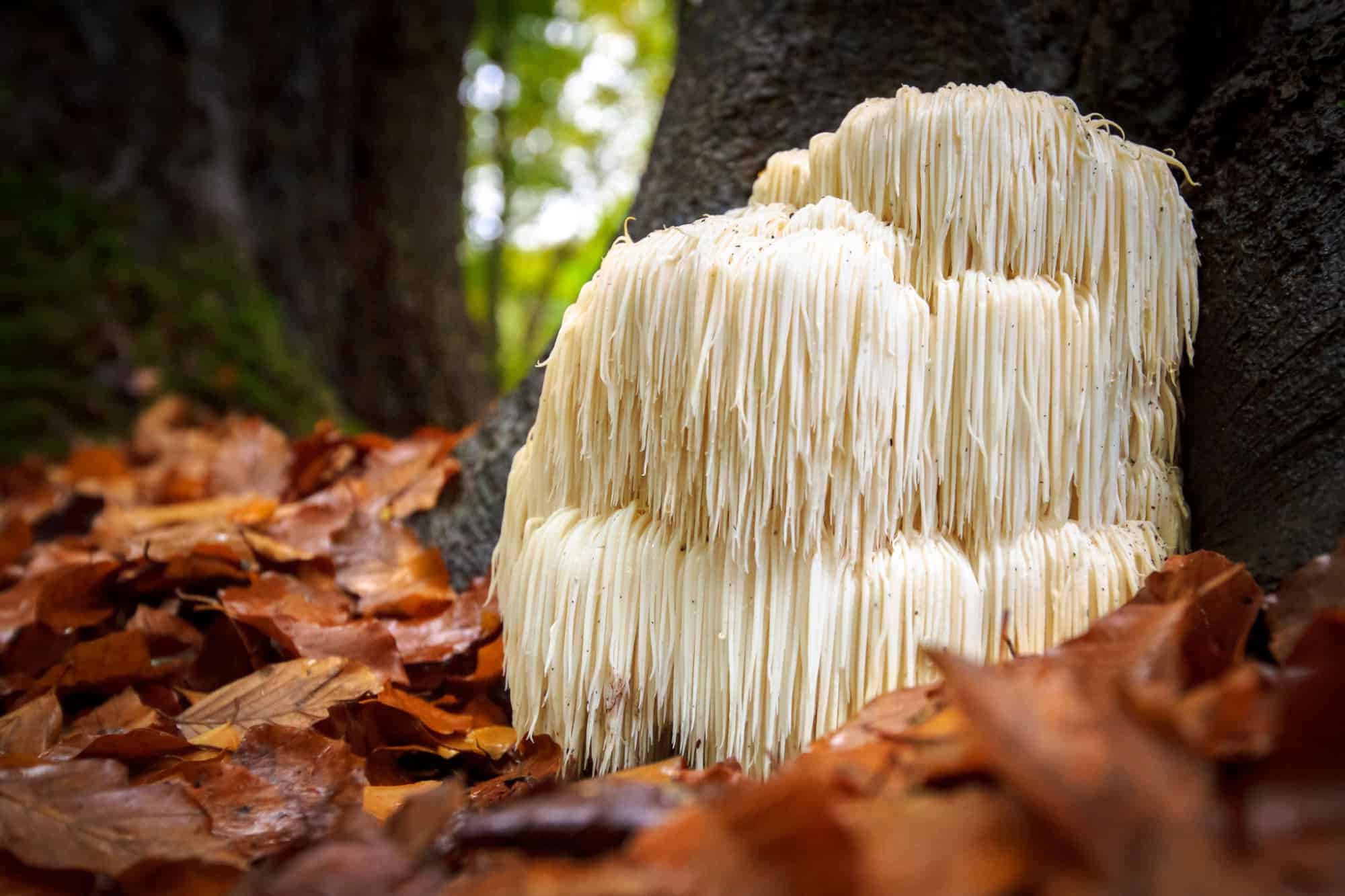

Home and Garden
How To Grow Lion’s Mane Mushrooms
Published: March 2, 2024
Learn how to grow lion's mane mushrooms at home with our comprehensive guide. Discover the best tips and techniques for cultivating these unique fungi in your garden. Start your mushroom-growing journey today!
(Many of the links in this article redirect to a specific reviewed product. Your purchase of these products through affiliate links helps to generate commission for Noodls.com, at no extra cost. Learn more)
Table of Contents
Introduction
Lion's Mane mushrooms, scientifically known as Hericium erinaceus, are not only a culinary delight but also boast a range of potential health benefits. With their unique appearance resembling cascading white icicles, these mushrooms have garnered attention for their potential cognitive and neurological advantages. As a result, many individuals are now seeking to cultivate these remarkable fungi in their own homes.
The process of growing Lion's Mane mushrooms can be a rewarding and fulfilling experience, allowing enthusiasts to witness the fascinating transformation from spores to fully developed mushrooms. Whether you are a seasoned mycophile or a novice gardener, embarking on the journey of cultivating Lion's Mane mushrooms offers an opportunity to connect with nature and savor the satisfaction of nurturing a unique and valuable crop.
In this comprehensive guide, we will delve into the intricacies of cultivating Lion's Mane mushrooms, exploring the key factors that contribute to successful growth. From understanding the ideal growing environment to selecting the most suitable substrate and mastering the art of caring for these delicate fungi, this guide will equip you with the knowledge and confidence to embark on your own mushroom cultivation journey.
Embarking on the endeavor of growing Lion's Mane mushrooms is not only an opportunity to enjoy a delectable and nutritious addition to your culinary repertoire but also a chance to engage in a captivating and enriching horticultural pursuit. As we delve into the nuances of cultivating these remarkable mushrooms, you will discover the gratifying process of nurturing and harvesting a unique and valuable crop that holds both gastronomic and potential health benefits.
Understanding Lion's Mane Mushrooms
Lion's Mane mushrooms, scientifically known as Hericium erinaceus, are a fascinating species revered for their distinctive appearance and potential health benefits. Also referred to as "pom pom" or "bearded tooth" mushrooms, they are characterized by their cascading, icicle-like spines, which give them an unmistakable resemblance to a lion's mane. These mushrooms are not only visually striking but also boast a delectable flavor profile, making them a sought-after ingredient in culinary circles.
Beyond their culinary appeal, Lion's Mane mushrooms have garnered attention for their potential cognitive and neurological benefits. Research suggests that these mushrooms contain compounds that may support brain health and cognitive function, making them a compelling addition to a balanced diet. Additionally, Lion's Mane mushrooms are believed to possess anti-inflammatory and antioxidant properties, further enhancing their appeal as a functional food.
In the wild, Lion's Mane mushrooms are often found growing on hardwood trees, particularly oak and maple, in temperate regions. Their preference for specific environmental conditions and substrates makes them a unique and intriguing species to cultivate. Understanding the natural habitat and growth patterns of Lion's Mane mushrooms is crucial for successfully replicating these conditions in a home cultivation setting.
As we delve into the intricacies of Lion's Mane mushroom cultivation, it becomes evident that these remarkable fungi offer a blend of aesthetic allure, culinary delight, and potential health benefits. By gaining a deeper understanding of their unique characteristics and growth requirements, enthusiasts can embark on a rewarding journey of nurturing and harvesting these extraordinary mushrooms in their own homes.
The allure of Lion's Mane mushrooms extends beyond their visual appeal and culinary versatility, encompassing their potential to contribute to overall well-being. As we explore the nuances of cultivating these remarkable fungi, we gain insight into the multifaceted nature of Lion's Mane mushrooms, positioning them as a captivating and valuable addition to both culinary and wellness pursuits.
Choosing the Right Growing Environment
Creating an optimal growing environment is essential for the successful cultivation of Lion's Mane mushrooms. These unique fungi thrive under specific conditions that mimic their natural habitat, ensuring that they can develop and flourish to their full potential. When selecting the right growing environment for Lion's Mane mushrooms, several key factors come into play, each contributing to the overall success of the cultivation process.
Temperature and Humidity
Lion's Mane mushrooms favor a cool and humid environment, mirroring the conditions found in their native wooded habitats. Maintaining a consistent temperature range of 55-65°F (13-18°C) is crucial for promoting healthy growth. Additionally, the humidity level should be kept relatively high, ideally between 85-95%, to create an environment conducive to the development of the mushrooms' distinctive spines.
Light and Air Circulation
While Lion's Mane mushrooms do not require direct sunlight for growth, they do benefit from indirect light or ambient illumination. Placing the cultivation area in a well-lit room, away from direct sunlight, can provide the gentle light exposure necessary for the mushrooms to thrive. Adequate air circulation is also vital, as it helps prevent the buildup of excess moisture and promotes a healthy growing environment.
Read more: How To Tell If Mushrooms Are Bad
Sterility and Cleanliness
Maintaining a sterile and clean growing environment is paramount to prevent contamination and ensure the successful growth of Lion's Mane mushrooms. This involves thorough sterilization of the cultivation area, tools, and growing containers to minimize the risk of competing fungi or bacteria impeding the growth of the desired mushrooms.
Enclosed Growing Space
Creating an enclosed growing space, such as a dedicated mushroom cultivation chamber or a well-sealed grow tent, offers the advantage of controlling environmental variables with precision. This allows for the regulation of temperature, humidity, and airflow, providing an ideal setting for the cultivation of Lion's Mane mushrooms.
By meticulously considering and addressing these crucial factors, enthusiasts can establish an optimal growing environment that mirrors the natural habitat of Lion's Mane mushrooms. This thoughtful approach sets the stage for a successful cultivation journey, laying the foundation for the subsequent stages of substrate selection, inoculation, and mushroom care.
Selecting the Best Growing Substrate
The selection of an appropriate growing substrate is a pivotal aspect of cultivating Lion's Mane mushrooms. The substrate serves as the nourishing medium in which the mushrooms establish their mycelium and ultimately produce the coveted fruiting bodies. When choosing a growing substrate for Lion's Mane mushrooms, several factors must be considered to ensure optimal growth and yield.
Hardwood-Based Substrates
Lion's Mane mushrooms have a natural affinity for hardwood-based substrates, particularly those derived from oak, maple, beech, and other deciduous trees. Hardwoods provide the ideal nutritional composition and structural integrity for the development of robust mycelium, laying the groundwork for the subsequent formation of the mushroom's distinctive spines. Hardwood sawdust, wood chips, or a combination of both can serve as an excellent base for cultivating Lion's Mane mushrooms.
Read more: How To Draw A Mushroom
Nutrient Content and Composition
The nutrient content and composition of the growing substrate play a crucial role in supporting the vigorous growth of Lion's Mane mushrooms. Hardwood substrates offer a rich source of lignin and cellulose, which serve as essential components for the development and sustenance of the mushroom mycelium. Additionally, supplementing the substrate with nitrogen-rich additives, such as wheat bran or soybean meal, can further enhance its nutritional profile, providing the necessary elements for robust mycelial growth and subsequent fruiting.
Moisture Retention and Drainage
A balance between moisture retention and adequate drainage is vital for the successful cultivation of Lion's Mane mushrooms. The growing substrate should possess the capacity to retain moisture without becoming waterlogged, as excessive saturation can impede mycelial growth and lead to potential issues such as contamination. Incorporating materials with varying particle sizes, such as fine sawdust and larger wood chips, can contribute to optimal moisture retention and airflow within the substrate.
Sterilization and Pasteurization
Ensuring the sterility of the growing substrate is imperative to prevent the proliferation of competing microorganisms that may hinder the growth of Lion's Mane mushrooms. Sterilization methods, such as heat treatment or chemical sterilants, can effectively eliminate unwanted contaminants, providing a clean canvas for the inoculation of mushroom spawn. Alternatively, pasteurization techniques involving controlled heat and moisture can also be employed to create a favorable environment for the growth of Lion's Mane mycelium.
Sustainability and Availability
Considering the sustainability and availability of the chosen substrate is essential for long-term cultivation endeavors. Utilizing locally sourced and renewable materials not only reduces environmental impact but also ensures a consistent supply of substrate for ongoing mushroom cultivation. By prioritizing sustainable substrate options, enthusiasts can align their cultivation practices with eco-conscious principles while fostering a reliable source of nourishment for their Lion's Mane mushrooms.
In essence, the selection of the best growing substrate for Lion's Mane mushrooms encompasses a thoughtful consideration of nutritional composition, moisture dynamics, sterilization methods, and sustainability. By meticulously evaluating these factors and choosing a substrate that aligns with the unique requirements of these remarkable fungi, enthusiasts can lay a solid foundation for successful mushroom cultivation, setting the stage for the subsequent stages of inoculation, care, and ultimately, the bountiful harvest of Lion's Mane mushrooms.
Read more: How To Grow A Mango Seed
Inoculating the Substrate
Inoculating the substrate marks a pivotal stage in the cultivation of Lion's Mane mushrooms, representing the introduction of the mushroom spawn to the prepared growing medium. This crucial step sets in motion the process of mycelial colonization, wherein the spawn establishes its network of filaments within the substrate, laying the groundwork for the eventual formation of the mushroom's fruiting bodies.
The inoculation process typically involves the utilization of mushroom spawn, which serves as the propagative material containing the mycelium of the desired mushroom species. Lion's Mane mushroom spawn, often in the form of grain spawn or sawdust spawn, is carefully distributed throughout the prepared substrate, initiating the colonization phase that is fundamental to the successful cultivation of these remarkable fungi.
Several methods can be employed to inoculate the substrate with Lion's Mane mushroom spawn, each offering unique advantages and considerations. One common approach involves evenly distributing the spawn throughout the substrate, ensuring thorough incorporation to facilitate uniform mycelial growth. This can be achieved through techniques such as layering the spawn between substrate layers or mixing it homogeneously with the growing medium, promoting widespread mycelial colonization.
Maintaining a sterile environment during the inoculation process is paramount to prevent contamination and ensure the unhindered proliferation of the desired mushroom mycelium. Adhering to stringent sterilization practices, such as working in a clean and controlled space and employing proper sanitation protocols, minimizes the risk of competing microorganisms compromising the inoculation process.
Once the substrate has been inoculated with the Lion's Mane mushroom spawn, it is essential to provide optimal conditions for mycelial growth and development. This involves maintaining the appropriate temperature, humidity, and airflow to support the establishment of a robust mycelial network within the substrate. By creating an environment conducive to mycelial proliferation, enthusiasts can set the stage for the subsequent phases of mushroom development, ultimately leading to a bountiful harvest of Lion's Mane mushrooms.
In essence, the inoculation of the substrate represents a critical juncture in the cultivation journey, signifying the commencement of mycelial colonization and the progression towards the eventual fruition of Lion's Mane mushrooms. By approaching this stage with precision, care, and a commitment to maintaining optimal growing conditions, enthusiasts can lay the groundwork for a successful and rewarding cultivation experience, culminating in the emergence of the coveted Lion's Mane mushrooms.
Caring for Lion's Mane Mushrooms
Once the Lion's Mane mushroom substrate has been inoculated and the mycelium has begun to colonize, diligent care and attention are essential to support the continued growth and development of these remarkable fungi. Caring for Lion's Mane mushrooms encompasses a range of practices aimed at maintaining optimal environmental conditions, monitoring the progression of mycelial growth, and addressing any potential challenges that may arise during the cultivation process.
Monitoring Environmental Parameters
Maintaining a consistent and conducive growing environment is paramount for the well-being of Lion's Mane mushrooms. Regularly monitoring temperature and humidity levels within the cultivation space ensures that the mushrooms are provided with the ideal conditions for robust growth. Additionally, ensuring adequate air circulation and ventilation helps prevent the buildup of excess moisture, reducing the risk of contamination and promoting a healthy growing environment.
Hydration and Moisture Management
Proper hydration is crucial for the development of Lion's Mane mushrooms. While the substrate should retain moisture, it is essential to avoid over-saturation, which can impede mycelial growth and lead to potential issues such as mold or bacterial contamination. Careful observation of the substrate's moisture content and periodic misting or watering, if necessary, helps maintain an optimal balance, supporting the vigorous growth of the mycelium.
Read more: How To Get Rid Of Mushrooms In Yard
Protection from Contaminants
Vigilance against potential contaminants is a fundamental aspect of caring for Lion's Mane mushrooms. Regular visual inspection of the growing substrate allows for the early detection of any signs of contamination, such as abnormal discoloration or the presence of foreign molds. Promptly addressing any indications of contamination through targeted interventions, such as selective removal of affected areas or adjustments to the growing environment, helps safeguard the health and vitality of the developing mushrooms.
Patience and Observation
Caring for Lion's Mane mushrooms also entails a degree of patience and attentive observation. As the mycelium continues to colonize the substrate, keen observation of its progression and development provides valuable insights into the health and vitality of the growing mushrooms. This attentive approach allows cultivators to intervene promptly if any irregularities or challenges arise, ensuring that the mushrooms receive the necessary support for successful maturation.
Harvesting Considerations
While the primary focus of caring for Lion's Mane mushrooms lies in fostering their growth, it is essential to consider the optimal timing for harvesting. As the mushrooms reach maturity, careful assessment of their size, color, and texture guides the decision-making process, ensuring that they are harvested at the peak of their development. By exercising patience and attentiveness throughout the cultivation journey, enthusiasts can savor the rewarding experience of harvesting fully mature Lion's Mane mushrooms.
In essence, caring for Lion's Mane mushrooms encompasses a holistic approach that prioritizes the provision of optimal growing conditions, vigilant monitoring, and a deep appreciation for the nuances of their development. By embracing these practices with dedication and attentiveness, cultivators can nurture the growth of these extraordinary fungi, ultimately reaping the rewards of a bountiful and fulfilling harvest.
Harvesting and Storing Lion's Mane Mushrooms
Harvesting Lion's Mane mushrooms is a gratifying culmination of the cultivation journey, signaling the attainment of fully developed fruiting bodies ready for culinary enjoyment. As these remarkable fungi reach maturity, careful and deliberate harvesting practices ensure the preservation of their quality and flavor, setting the stage for subsequent storage and culinary utilization.
When harvesting Lion's Mane mushrooms, it is essential to approach the process with precision and attentiveness. The mushrooms should be carefully severed from the substrate using a sharp, clean knife or scissors, ensuring that the entire fruiting body is cleanly detached. Gentle handling during the harvesting process helps preserve the delicate structure of the mushrooms, safeguarding their visual appeal and texture.
Optimal timing for harvesting Lion's Mane mushrooms is indicated by the development of their characteristic spines, which should be well-formed and visually striking. Additionally, the mushrooms should exhibit a pristine white coloration, signifying their peak freshness and flavor. By harvesting the mushrooms at this stage, enthusiasts can savor their optimal taste and texture, elevating their culinary potential.
Following the harvest, proper storage is crucial to maintain the quality and shelf life of Lion's Mane mushrooms. These mushrooms are best stored in a refrigerated environment, preferably in a paper bag or breathable container to allow for air circulation. This helps prevent moisture buildup, preserving the mushrooms' texture and flavor.
Alternatively, Lion's Mane mushrooms can be preserved through methods such as drying or freezing, extending their shelf life for future use. Drying the mushrooms, either through air-drying or using a dehydrator, allows for long-term storage while retaining their flavor and nutritional benefits. Similarly, freezing Lion's Mane mushrooms after blanching or sautéing them provides a convenient option for preserving their culinary versatility.
By embracing meticulous harvesting practices and adopting suitable storage methods, enthusiasts can prolong the enjoyment of their homegrown Lion's Mane mushrooms, ensuring that their exceptional flavor and nutritional value are preserved for culinary endeavors. This thoughtful approach to harvesting and storing Lion's Mane mushrooms encapsulates the culmination of the cultivation process, offering a rewarding and sustainable source of culinary delight.
Read more: How To Successfully Grow Onions
Conclusion
In conclusion, the cultivation of Lion's Mane mushrooms represents a captivating and rewarding journey that intertwines culinary delight, horticultural fascination, and potential health benefits. As we have explored the intricacies of growing these remarkable fungi, it becomes evident that the process encompasses a harmonious blend of scientific understanding, attentive care, and a deep appreciation for the natural wonders of the fungal kingdom.
From the initial stages of understanding the unique characteristics of Lion's Mane mushrooms to the meticulous selection of the optimal growing environment and substrate, each facet of the cultivation process contributes to the overarching narrative of nurturing and harvesting these extraordinary fungi. The careful consideration of environmental parameters, moisture dynamics, and sterilization practices underscores the dedication and precision required to create an ideal setting for the growth of Lion's Mane mushrooms.
Furthermore, the act of inoculating the substrate and fostering the subsequent mycelial colonization represents a pivotal juncture in the cultivation journey, marking the transition from preparation to active cultivation. The attentive care and vigilance exercised during the mycelial growth phase lay the foundation for the eventual emergence of the coveted Lion's Mane mushrooms, embodying the culmination of dedicated cultivation efforts.
As the mushrooms reach maturity, the art of harvesting and storing them with precision and consideration ensures that their exceptional flavor and nutritional benefits are preserved for culinary enjoyment. Whether incorporated into gourmet dishes, utilized for their potential health-promoting properties, or simply admired for their visual allure, the harvested Lion's Mane mushrooms embody the culmination of a labor of love and a testament to the multifaceted appeal of mushroom cultivation.
In essence, the journey of growing Lion's Mane mushrooms transcends the realm of mere cultivation, offering enthusiasts an opportunity to connect with nature, savor the fruits of their labor, and partake in a holistic experience that encompasses gastronomic pleasure, wellness potential, and a profound appreciation for the wonders of the natural world. As we reflect on the comprehensive guide to cultivating Lion's Mane mushrooms, it becomes evident that this endeavor is not merely about growing mushrooms; it is a journey of discovery, connection, and the celebration of nature's bountiful offerings.
